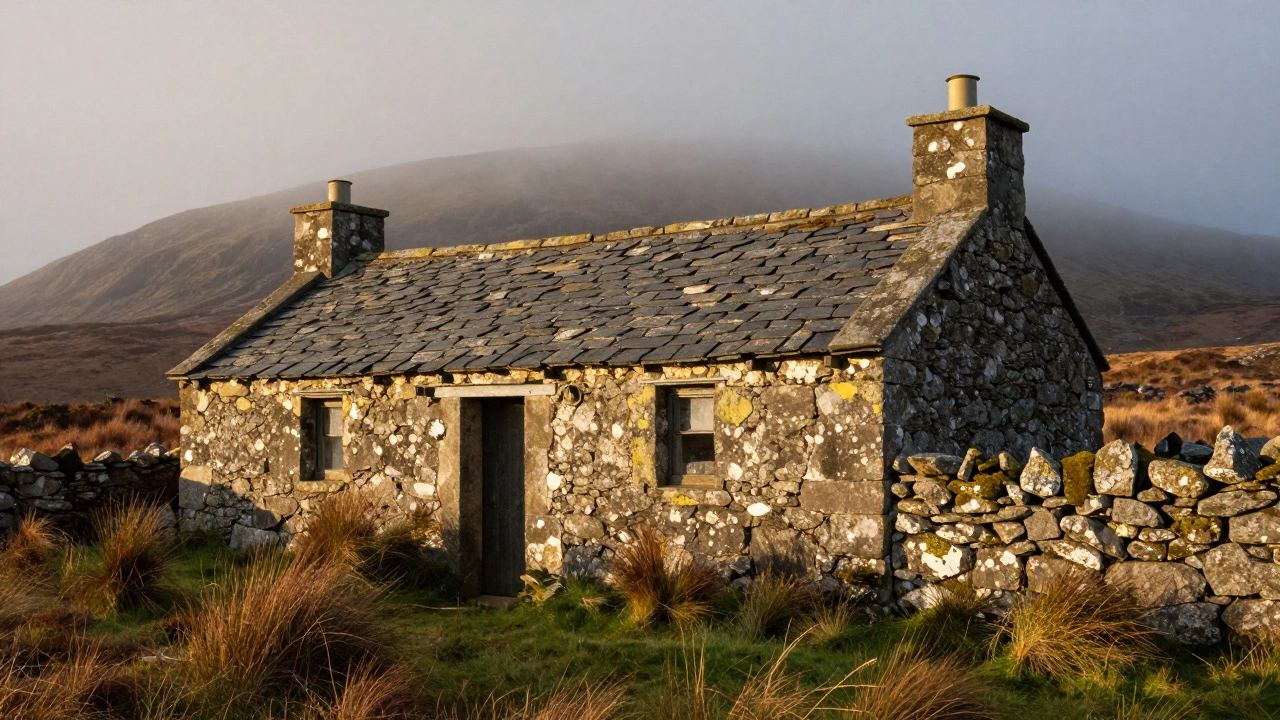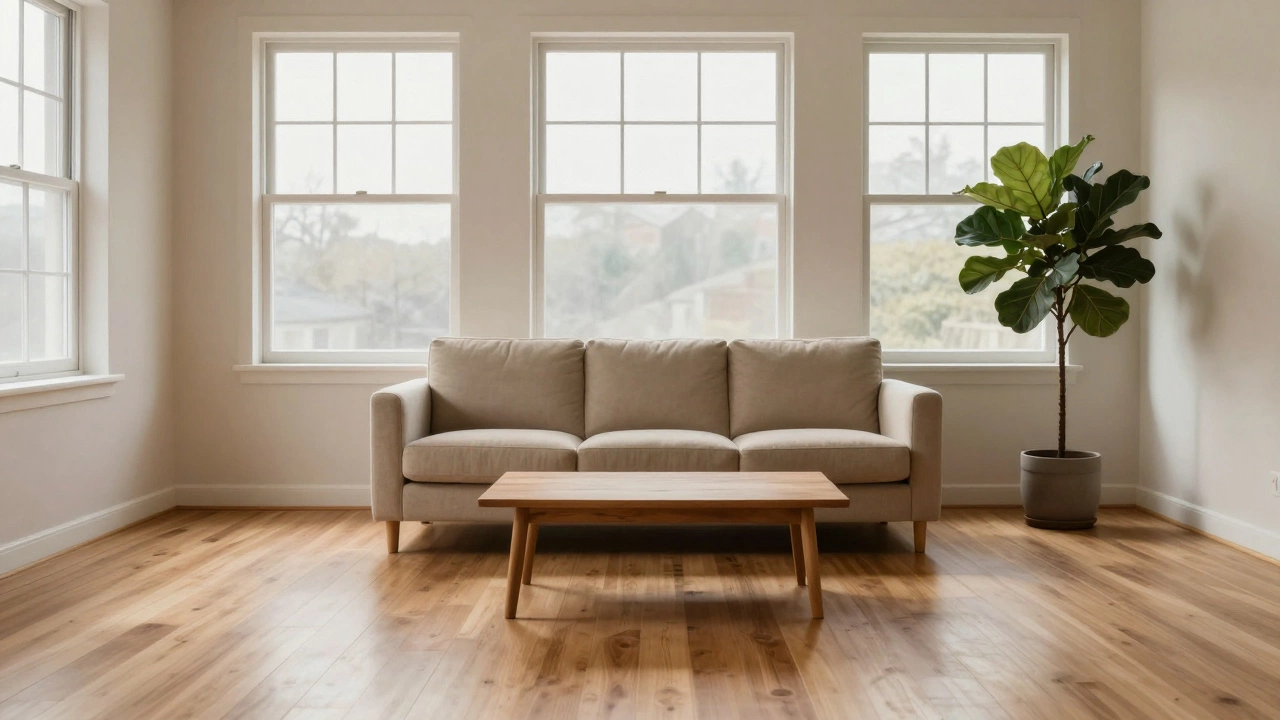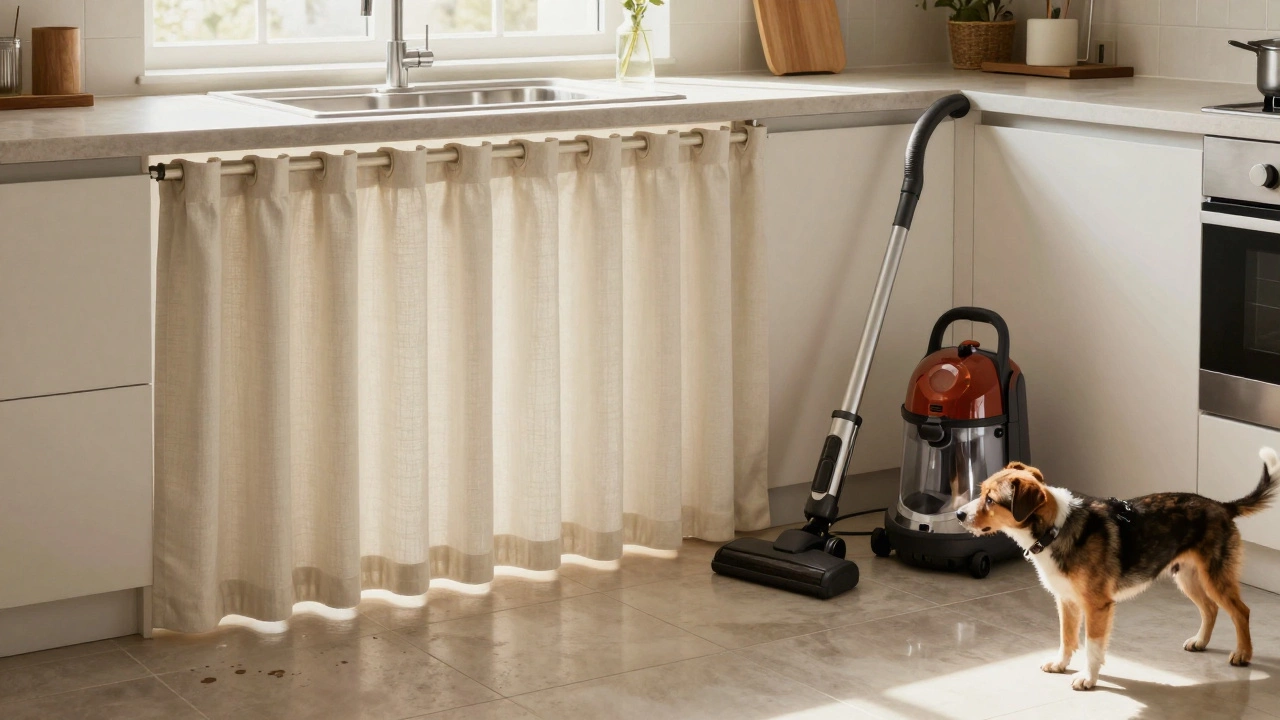If you’re staring at towers of boxes, cluttered closets, and wondering if you’ll ever see your sanity—or that one missing sneaker—again, you’re absolutely not alone. Packing a whole house for storage isn’t just about stuffing things into boxes or hauling furniture into some nondescript unit. This is about protecting your stuff, keeping your future self sane, and avoiding those classic post-storage surprises—like shattered Grandma glassware or realizing you’ve entombed your winter jacket right behind the fridge. So, what's the trick to packing a house for storage like you’ve done this before (even if you haven’t)? Let’s get into the trenches and make it make sense.
Smart Prepping: Purge, Sort, and Make a Game Plan
First things first—don’t even think about buying that bubble wrap till you’ve scouted every room and purged the nonsense. You probably don’t need three can openers. Get brutal with what goes and what stays. Donation centers exist for a reason, and your future unpacking self will thank you for every broken umbrella or half-dead blender you ditch now.
It helps to split your house into zones—bedrooms, kitchen, living room, garage. Once you eyeball each area, create a quick inventory. This isn’t busywork. Lose track now and you’ll be on your eighth trip to the unit just to find tennis balls. Label as you go—one big tip: use brightly colored labels or tape for each room. Now, about supplies. Don’t be stingy with boxes. You’ll want sturdy, uniform-size moving boxes, packing tape, markers, bubble wrap (the big bubbles for plates, little bubbles for glassware), and vacuum bags for bedding and clothes. Pro tip: boxes are easier to stack and move if they’re the same size. Those boxes you “rescued” from the grocery store? Use them last—they break ranks in storage and collapse under real weight.
Another unsung hero: clear plastic bins with real lids (not the weird kind that pop off if you breathe near them). They’re pricier up front, but you can actually see what’s inside, and bugs or moisture won’t stand a chance. For furniture, snag those stretch wrap rolls and furniture blankets. The difference between a cherished wooden coffee table and a scratched relic is about $15 worth of wrapping. Make your packing checklist and do a quick run to any local moving supply store. It’s not glamorous, but trust me, high-quality supplies pay off the next time you’re not wrestling soggy cardboard in a leaky storage unit.
- Sort all items by category and use, not just room.
- Photograph high-value or sentimental items before boxing them.
- Write a number on each box and keep a digital list with contents—on your phone, not a post-it.
Remember, American families on average own about 300,000 items, according to the LA Times. That’s a lot of stuff—way more than you think until it’s time to pack. So, spend more time prepping now; your future unpacking experience will feel like a breeze.
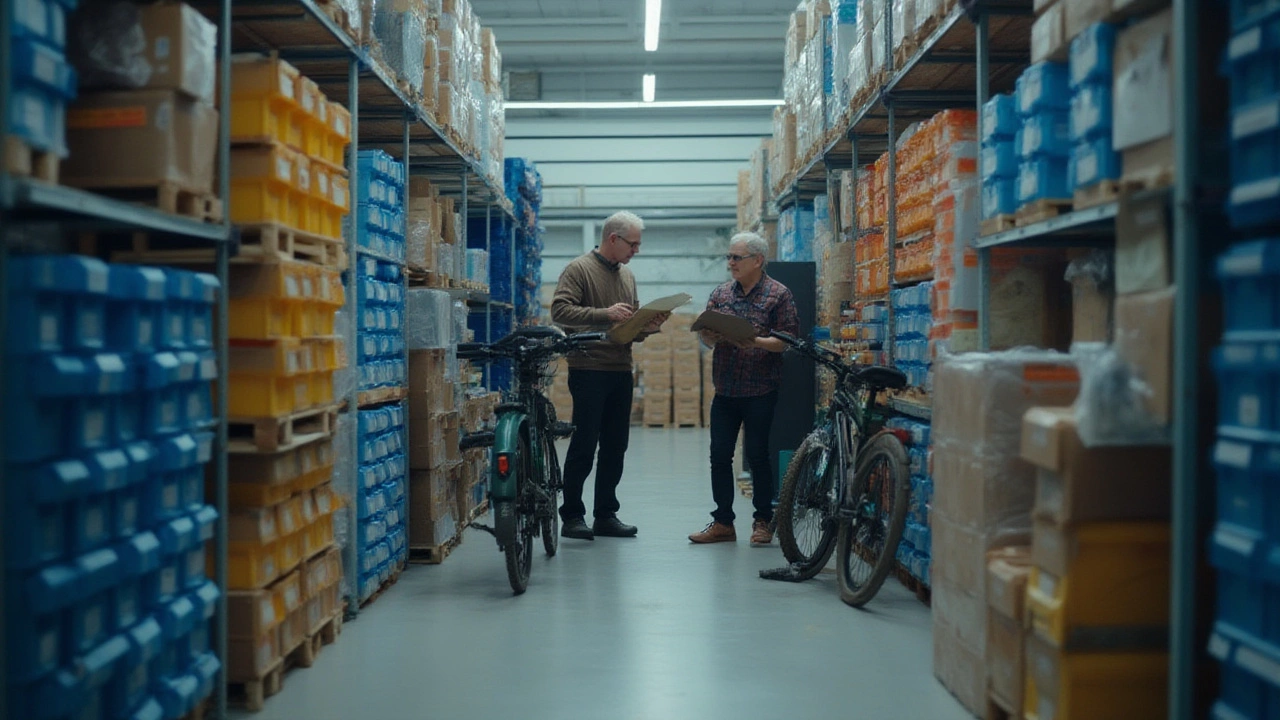
Packing Like a Pro: Safe, Simple, and Sane
Once your sorting is done, the process of actually boxing up is equal parts muscle work and Tetris expertise. Start with out-of-season stuff and the rarely used, and always pack the heaviest items in the smallest boxes you have. This isn’t just a moving company catchphrase; it’s gravity. Ever tried to move a large box full of books? Congratulations, you just invented a hernia.
Cushion every box bottom with something soft—crumpled paper, towels, even old shirts. Layer breakables using bubble wrap, and don’t leave air pockets; those cause damage when things shift. Stack plates on their sides like vinyl records, not flat. Wrap lamp bases and shades separately—seriously, shades dent and rip just by looking at them funny. For electronics, use original packaging if you have it; otherwise, wrap them in blankets and stick clear labels on the boxes (no clever nicknames—be specific).
Never pack hazardous materials (paint, fertilizers, aerosol cans). Most storage facilities ban these anyway, and you don’t want to open your unit to a chemical volcano. As for mattresses and sofas, wrap them in plastic, but toss in a few moisture-absorbing packets to keep them fresh. Vacuum bags are gold for clothes and bedding, shrinking everything down to save space and sealing out dust. And for furniture with removable legs or shelves, take them apart. Tape hardware in labeled sandwich bags and attach these to the base piece—no more legendary “missing bolt” tales six months from now.
- Fill boxes completely to prevent collapse, but keep them under 40 pounds each.
- Label every box on at least two sides with room, contents, and a number.
- Put screws and small parts in labeled baggies and tape them to the furniture piece.
- Wrap mirrors, artwork, and frames with cardboard corners and large sheets of bubble wrap. Store upright, not flat.
Did you know? The U.S. self-storage market was valued at $43.34 billion in 2023, according to Statista. So there’s no shortage of storage units—but there’s also no magic fairy coming to repack your boxes if you do it wrong. Some folks stack value over convenience, but ease of access always wins. If you know you’ll be coming by for holiday gear or kids’ old toys, make sure those boxes go near the front of the unit.
| Box Size | Ideal For | Weight Limit |
|---|---|---|
| Small | Books, tools, dishes | Up to 50 lbs |
| Medium | Kitchen items, toys, linens | Up to 45 lbs |
| Large | Clothes, pillows, bedding | Up to 40 lbs |
| Extra Large/Bins | Light, bulky items | Up to 35 lbs |
See those weight limits? Ignore them and risk crushed boxes or injury. Your back isn’t getting any younger, and storage insurance rarely covers self-made mountain disasters.
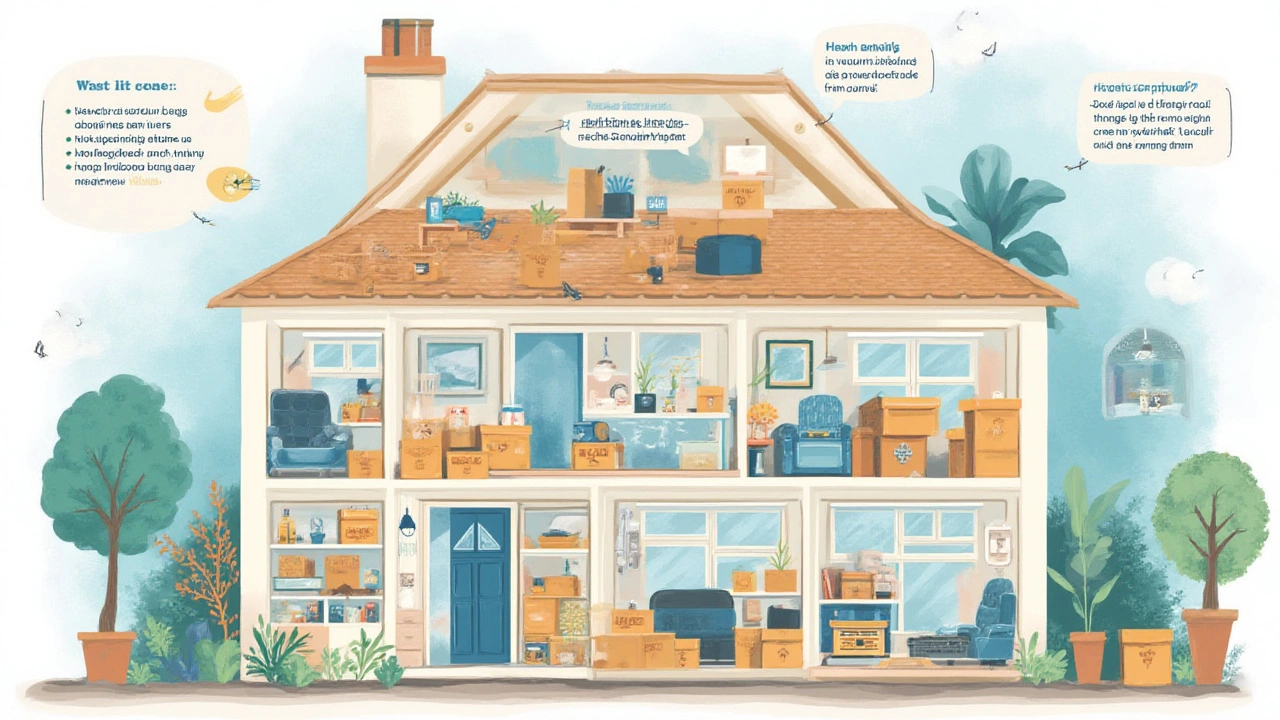
Storage Organization Secrets for Easy Retrieval
Packing up your house isn’t just a game of getting your stuff into boxes—it’s about making sure you can actually get your stuff out again without a full archaeological dig. The real test comes when you need your ski jacket in December, but it’s barricaded by Halloween décor and six years’ worth of tax papers.
The best move? Map out your storage unit on paper or a phone drawing app before you haul things in. Place the items you rarely need—family memorabilia, out-of-season gear—at the back. More frequently accessed stuff (think: extra kitchen gadgets, office supplies, seasonal clothes) goes at the front. Big, heavy furniture should form the “walls” and corners, with lighter items stacked above. Always leave a small aisle down the middle. You’ll thank yourself later when you aren’t army-crawling over boxes just to find a single spatula.
Clear plastic bins shine here. You can spot your favorite sweater from yards away, no frantic digging required. If you use boxes, keep that digital inventory handy. Some people swear by snapping quick photos of the box contents before sealing them—super helpful when you need just one tool and don’t want to open every “garage” box in sight. If you stack boxes more than three high, go with the punchline: heavy on bottom, lighter on top. Nothing smashes fragile memories quite like a box of books high-diving onto a box of Christmas ornaments.
- Place the items you’ll need soonest at the unit’s front for quick grabs.
- Store mattresses and sofas vertically to maximize floor space (wrap them for protection).
- Use shelving (freestanding or brought from home) for smaller, regular-access items.
- Roll up area rugs and store them upright in corners.
- Keep a master list of item locations on your phone, updating as boxes are added or removed.
Statistics show Americans spend a jaw-dropping 2.5 days a year looking for lost items. Multiply that when everything’s boxed away. Packing your house for storage in a way that makes things accessible saves hours and keeps the process stress-free down the road.
Humidity and temperature matter, especially if you’re storing electronics, photos, or anything remotely sentimental. If you’re going with a non-climate-controlled unit, toss in moisture absorbers or desiccant packs and don’t store anything that can warp or grow mold. As for security—most modern storage units have solid surveillance and lighting, but it’s not enough to just close the door and hope. Use a heavy-duty lock and keep a photo of your lock on your phone, just in case you need a locksmith later.
At the end of the day, packing your house for storage is about more than moving your stuff—it’s about respecting what you own and giving yourself the peace of mind that everything is safe, easy to find, and right where you need it when life says, “Hey, remember that thing? You’ll be needing it tomorrow.”


